Partenavia Observer
One
of the first aircraft flown was a Partenavia Observer owned and operated
by the California State Department of Fish
and Game. It is a 6-seat, twin-engine aircraft. No data were
collected from this plane, it was only used for testing. After testing
on this aircraft, the lidar was moved to the King to allow more room
for observers in addition to the lidar operator.
|
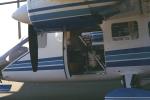
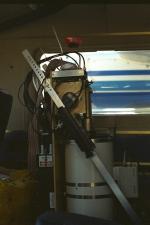
|
Casa
As part of the JUVESU program, we have
flown on a Spanish Casa airplane of the Spanish space agency INTA.
This is a twin-engine cargo plane that is used for aerial photography.
It has two large camera ports in the bottom. One is used for the
lidar and the other is used by INTA for simultaneous multispectral imagery.
The center picture is our lidar mounted in one of the camera ports.
This shows the black laser housing on the left of the main lidar plate
and the white telescope tube on the right. The picture on the right
is the operator station showing the rack of electronics. The laser
cooling unit and power supply are at the bottom, the computer is next with
the monitor and keyboard at the top, and at the top of the rack are the
power supply for the photomultiplier tube and timing electronics.
|
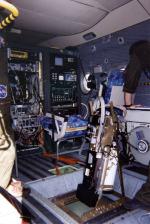
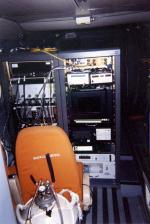
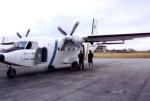
|
King Air 200
The King Air is a twin-engine aircraft owned and operated by the California
State Department of Fish and Game. They use the aircraft to stock
mountain lakes with fish. This means that large cutouts have been
put in the floor through which the fish can be dropped into the lakes without
landing. One of these is an ideal window for the lidar.
|
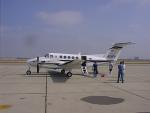
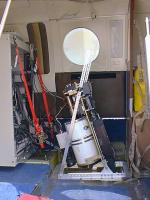
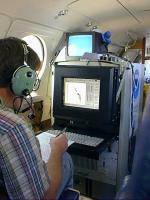
|
Rockwell Aerocommander
During flights in Alaska in the summer of 2000, the lidar was installed
in a Rockwell Aerocommander. The aircraft is pictured at the left.
The next picture is the lidar looking back from the pilot's seat.
The optics package is in the foreground of the picture. Just behind
the optics package is the rack with the computer and the laser power supply.
The operator sits behind the rack in the back of the cabin and faces the
rack. The picture on the right is the display seen by the operator.
A similar plane was used in the Norwegian mackerel surveys.
|
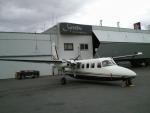
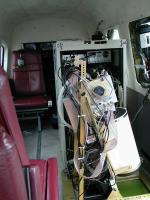
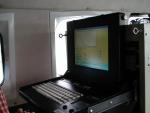
|
Cessna Cardinal
The smallest aircraft that we have operated
from is a 4-seat Cessna Cardinal. This plane is owned and operated
by Dr. Jay Palmer, and is ideal for testing. It was also used
in the herring survey done in Washington State. We modified the aircraft
by installing a 8" by 10" window and by installing a 100-A alternator so
that we could operate the lidar and still have enough electrical power
for the airplane. The operator sits in the right-hand seat facing
backwards. The monitor is held on the operator's lap, and the lidar
is controlled via touch-screen.
|
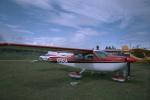
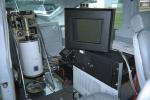
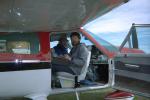
|
DeHaviland Twin Otter
In December, 2000, the lidar was installed in the Twin Otter operated
by the NOAA Aircraft Operations Center
in Tampa, Florida. The photograph on the right shows the equipment
rack on the left. This contains the laser power supply, and computer,
and some timing electronics. To the right is the optics package.
The white cylinder is the receiver telescope with the detector module on
the top. The laser is out of sight behind the telescope. Both
the telescope and the laser are pointer through the large camera port in
the bottom of the aircraft.
|
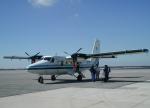
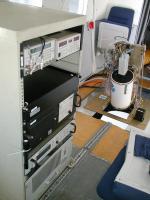
|
King Air 90
Much of the recent work has been done in a King Air 90, which is smaller, and therefore
more economical, than the 200. The photos are of the plane that was used in 2003.
Different planes of the same type were used in 2001 and 2002. Only the lidar optics
package is shown in the photo. The collecting telescope is the black tube on the left with
the white detector package on top. To the right of that is the intensified CCD camera
used for images of objects near the surface. The laser is on the back side of the plate, and
the electronics rack is out of the field of view.
|
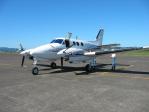
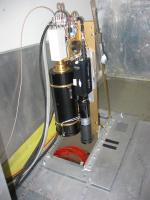
|